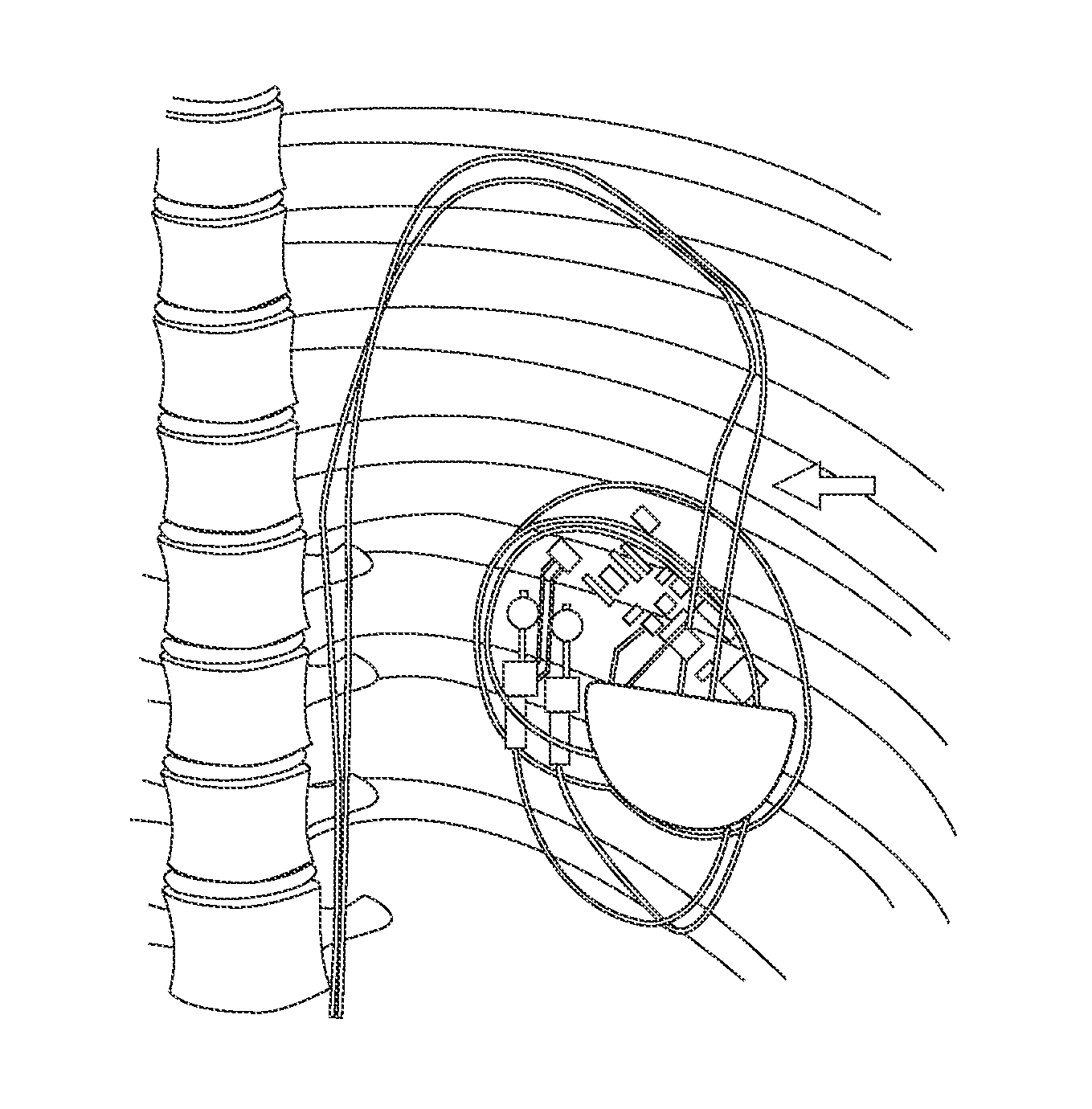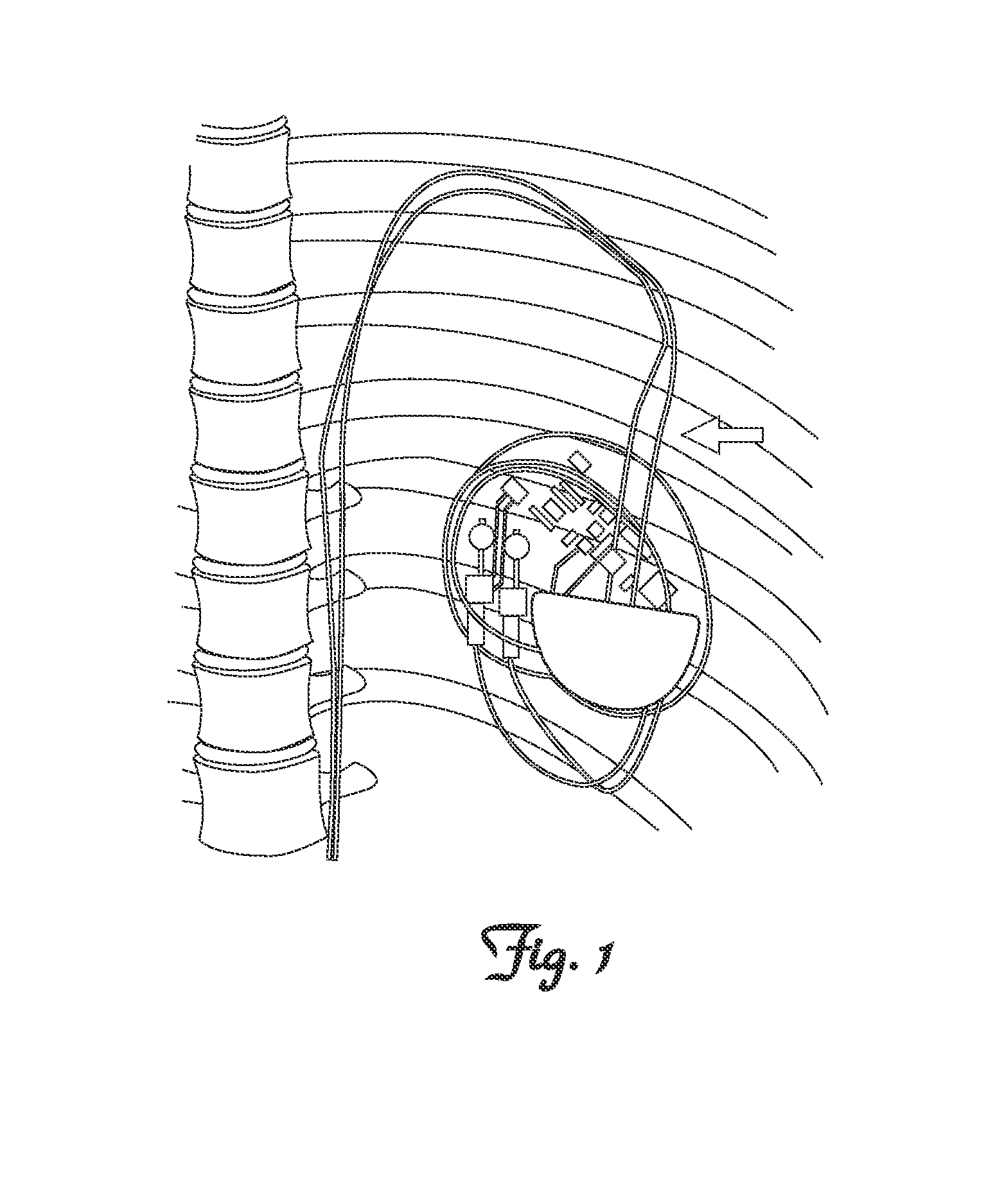Methods and Apparatus for Detecting and Localizing Partial Conductor Failures of Implantable Device Leads
- Summary
- Abstract
- Description
- Claims
- Application Information
AI Technical Summary
Benefits of technology
Problems solved by technology
Method used
Image
Examples
embodiment 80
[0051]In another embodiment, a capacitor embodiment 80 could be used for the RV coil conductor impedance measurement. The capacitance ranges discussed earlier are acceptable and would not conduct sufficient energy or current to cause damage. While there would be a short high-current spike, its duration would be too short to cause electroporation stunning
[0052]In general, the input impedance Zin of a transmission line, with an excitation wavelength of, is given by:
Zin=Z0ZL+jZ0tan(βl)Z0+jZLtan(βl)[0053]where =2π / ZL is the load impedance, and Z0 is the characteristic impedance of the transmission line.
[0054]For the special case where a frequency with a multiple of a half-wavelength (of the lead) is used, the tangent terms become 0 and the equation reduces to:
Zin=ZL
so that the input impedance equals the load impedance.
[0055]Modern ICD leads are complex and hence their impedance spectra are more complex than the ideal simple transmission line.
[0056]The plot of the impedance spectra of a...
embodiment 70
[0058]FIG. 11 depicts an embodiment of an ICD lead 110 using the diode embodiment 70 along with typical MRI protection components 91 to aid in identifying small changes in the lead impedance. Shown is a partial schematic of an ICD lead 110. This embodiment depicts the combination of the impedance-testing diode 72 for both the tip-ring conductor pair and the RV coil-ring conductor pair. Because of the diode 72 configuration, this approach has the disadvantage of conducting some of the negative (2nd) phase current thru the tip. However, the MRI LC tank 91 would be expected to limit this current to a low value.
[0059]FIG. 12 depicts a solid state implementation 120 of an embodiment of the invention. The diode 121 and capacitor 123 scavenge a small amount of charge from the pacing pulses. If testing is required and there have been no pacing pulses, then a few are delivered to charge up the distal capacitor which then powers the digital circuit shown in the block diagram of FIG. 12.
[0060]...
PUM
 Login to View More
Login to View More Abstract
Description
Claims
Application Information
 Login to View More
Login to View More - R&D
- Intellectual Property
- Life Sciences
- Materials
- Tech Scout
- Unparalleled Data Quality
- Higher Quality Content
- 60% Fewer Hallucinations
Browse by: Latest US Patents, China's latest patents, Technical Efficacy Thesaurus, Application Domain, Technology Topic, Popular Technical Reports.
© 2025 PatSnap. All rights reserved.Legal|Privacy policy|Modern Slavery Act Transparency Statement|Sitemap|About US| Contact US: help@patsnap.com



